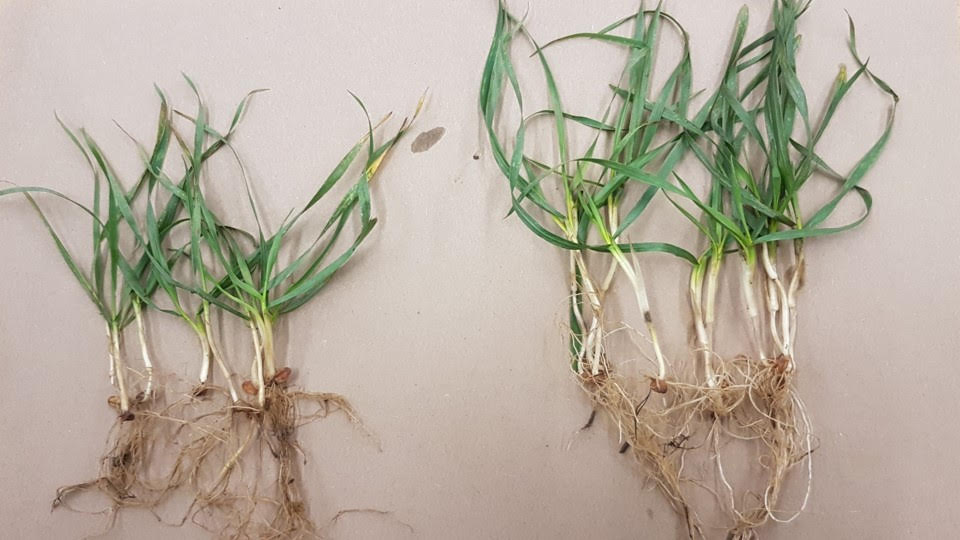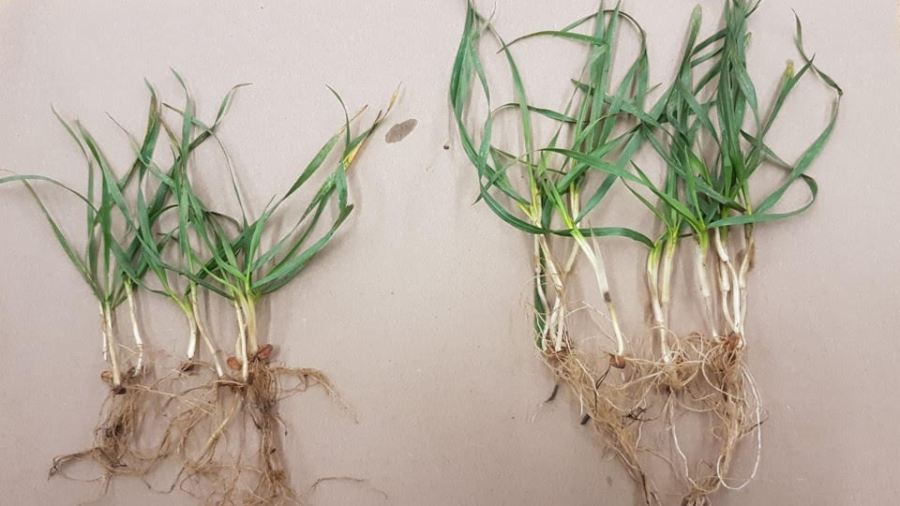Independent trials show benefits of autumn-applied Polysulphate
New trial results have revealed an autumn application of a multi-nutrient fertiliser can increase wheat yields by 0.3t/ha and decrease nutrient leaching over the winter months.
The three-year trial was commissioned by ICL and undertaken by independent field trial specialists, Envirofield. ICL agronomist Scott Garnett says the results indicate using Polysulphate results in better nutrient utilisation efficiency and increased root development.
“Previous trials in winter wheat have shown a 5-8% increase in yields from spring-applied Polysulphate by itself, but this latest work suggests a further significant response from an initial application of the product in the autumn,” he says.
Trial protocol
The trials were carried out in Suffolk on loam soil using Skyfall and show a single 100kg/ha Polysulphate application in spring provides around 50kg SO3/ha, delivering an average yield over the three years of 10.49t/ha.
Scott says when this was preceded by a supplementary application of 100kg/ha of Polysulphate in the previous autumn, an average yield of 10.79t/ha was achieved – an increase of 0.3t/ha.
“At current values, the cost of the extra application would be more than covered by the additional grain income, plus there are significant environmental benefits to factor in too,” he explains.

ICL agronomist Scott Garnett has carried out three years of trials on autumn applications of Polysulphate with impressive results seen
Optimising NUE
According to Scott, Polysulphate’s prolonged release action and unique 48% SO3, 14% K2O, 6% MgO and 17% CaO analysis were key in achieving the results achieved. “Optimum levels of sulphur are essential in driving nitrogen utilisation but practically all soils in the UK are deficient in this vital element now, so no matter how much N you apply, without sulphur you will never get the most out of it.
“Polysulphate’s 48% SO3 content rapidly builds sulphur to the optimum level in the soil and the prolonged release nature of the product keeps levels topped up as plants develop through the autumn,” he says.
Trials conducted by the University of Nottingham trials suggest more than 50% of the sulphur contained in the product is available in the first 12 days after application, with the remainder released over the following 6-8 weeks.
“Potassium is also essential in maximising NUE, so the 14% K2O in Polysulphate plays a vital role alongside the high level of sulphur contained,” says Scott.
Early root mass
He believes the creation of early root mass is another yield-building benefit of autumn-applied Polysulphate. “We’ve conducted a lot of work on how it affects establishment of crops and there’s clear evidence the calcium and magnesium it contains encourage greater phosphate uptake by the plants and significant development of roots.
“Trials in winter cereal crops show 34% greater phosphate uptake by plants receiving the autumn application of Polysulphate and this is directly proportional to the extra root mass seen. This aligns with other trials across a range of crops showing a consistent 30-40% increase in phosphate uptake,” explains Scott.
Environmental benefits
The trials also show the additional nitrogen uptake from autumn-applied Polysulphate is 36% – equivalent to 10kgN/ha more being taken up by crops over the winter period.
“This, combined with the increased phosphate uptake, means the potential for loss of key nutrients from the soil over the winter period is considerably reduced. Not only are we getting vital extra nitrogen and phosphate into the crop, there are environmental benefits too, plus the extra root mass means the plants are much stronger and healthier overall and will get away quicker following the winter.
“This sets plants up to make full use of nitrogen in the spring and all adds to the crop producing the 0.3t/ha yield increase we’ve seen in the trials,” explains Scott.
He says growers wishing to take advantage of these benefits have two options regarding applications this autumn. “Polysulphate can be applied from early October to before Christmas either as a straight or in a blend as part of a grower’s autumn fertiliser programme. It can be broadcast using conventional fertiliser spreaders or direct-drilled with the seed.”
Sustainable future
According to Scott, the product has many benefits in modern sustainable crop production systems. Notably, it has the lowest carbon footprint of all equivalent fertilisers at just 0.034kg/CO2e, which is less than 6% of the carbon footprint of nitrogen sulphur products.
“At a time when the food industry is focused on the sustainability of its supply, Polysulphate represent a new generation of fertilisers more closely aligned to the requirements of growers, the wider food industry and consumers in the future,” he concludes.

Additional root mass (right) created by Polysulphate applied in the autumn can increase key nutrient uptake by 30 – 40%




